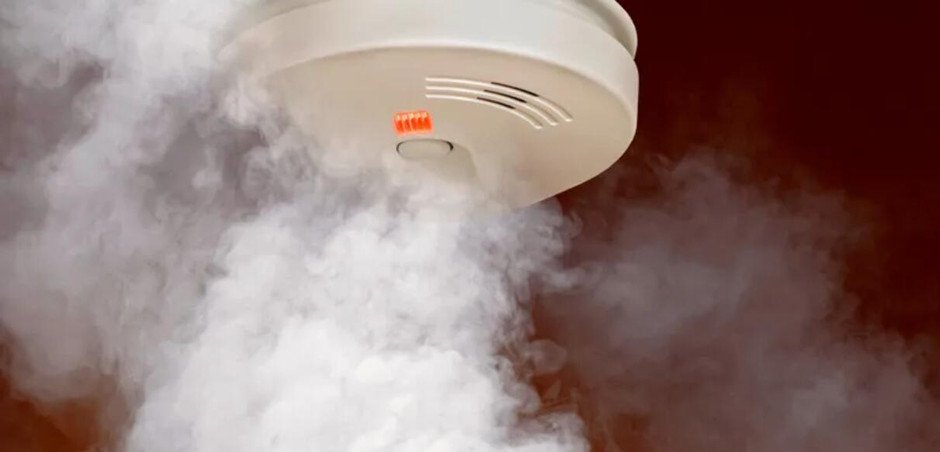The Evolution of Smoke Detectors: Enhancing Home Safety with Advanced Technology

Smoke detectors have been a vital component in maintaining home safety for decades. By providing early warnings of potential fire hazards, these life-saving devices have significantly reduced the number of fire-related injuries and fatalities. As technology continues to advance, smoke detectors have become even more effective and reliable. In this article, we’ll explore the fundamental principles behind smoke detectors, and how recent technological advancements have made them more efficient in keeping homes safe.
Understanding the basics of smoke detectors
There are two main types of smoke detectors: ionization and photoelectric. Ionization detectors contain a small amount of radioactive material that ionizes the air inside the chamber, creating a current between two charged plates. When smoke enters the chamber, it disrupts the current, triggering the alarm. Photoelectric detectors, on the other hand, use a light source and a sensor positioned at a 90-degree angle. When smoke enters the chamber, it scatters the light, causing it to hit the sensor and activate the alarm.
Both types of detectors are effective at detecting fires, but they respond differently to various types of fires. Ionization detectors are more sensitive to fast-flaming fires, while photoelectric detectors are better at detecting slow, smoldering fires. It’s recommended to have both types of detectors installed in your home for maximum protection.
Technological advancements in smoke detectors
Over the years, smoke detectors have evolved to incorporate various technological advancements, making them more reliable and effective in detecting fires. Some key developments include
Interconnectivity: Vape smoke detector
Modern smoke detectors can be interconnected, allowing them to communicate with one another. Many smoke detectors are now also vape detectors, which allow schools, businesses etc. to receive an alert when the vape smoke detector senses vape residue. The way they work is pretty impressive. When one detector senses smoke, all interconnected alarms sound, providing an earlier warning and more time to react. This is especially useful in large homes or multi-story buildings, where a fire in one area may not immediately trigger a standalone detector in another part of the building.
Smart smoke detectors
Smart smoke detectors can be connected to the internet, enabling them to send notifications to your smartphone or other devices when an alarm is triggered. This allows you to monitor your home’s safety even when you’re away, providing an extra layer of protection. Some smart detectors can also be integrated with home automation systems, enabling you to control and monitor various aspects of your home, including heating and cooling systems, which can help prevent potential fire hazards.
Improved sensitivity and reduced false alarms
Modern smoke detectors are equipped with advanced sensors that are more accurate in detecting fires and less prone to false alarms. Some models use dual-sensor technology, combining both ionization and photoelectric sensors, to provide more comprehensive protection. Others feature advanced algorithms and adjustable sensitivity settings to minimize false alarms caused by cooking smoke or steam.
Carbon monoxide detection
Some smoke detectors now include built-in carbon monoxide (CO) sensors, which detect the presence of this deadly, odorless gas. By combining both smoke and CO detection capabilities in a single device, these detectors offer more comprehensive protection against multiple threats to your home’s safety.
The importance of proper maintenance and replacement
Regardless of the technology used in a smoke detector, regular maintenance is crucial to ensure its effectiveness. This includes testing the alarms monthly, replacing the batteries at least once a year, and cleaning the detectors according to the manufacturer’s instructions. Smoke detectors have a limited lifespan, usually around 10 years, after which they should be replaced to ensure optimal performance.
Future developments in smoke detector technology
As technology continues to advance, we can expect even more improvements in smoke detector capabilities. Potential developments may include more accurate sensing technologies, longer battery life, and increased integration with smart home systems. Additionally, researchers are exploring the potential of artificial intelligence (AI) and machine learning in enhancing the performance of smoke detectors. AI-powered detectors could potentially analyze the specific type of smoke and differentiate between real threats and harmless sources, further reducing false alarms and increasing overall safety.
Smoke detectors play a critical role in maintaining home safety and have saved countless lives by providing early warnings of potential fire hazards. The incorporation of advanced technology has made these devices even more effective and reliable, enhancing their ability to protect homes and families. By staying informed about the latest developments in smoke detector technology and ensuring proper maintenance and replacement, homeowners can ensure the highest level of protection against fires and other threats. As technology continues to evolve, we can look forward to even greater advancements in smoke detector capabilities, providing an even safer environment for our homes and loved ones.



